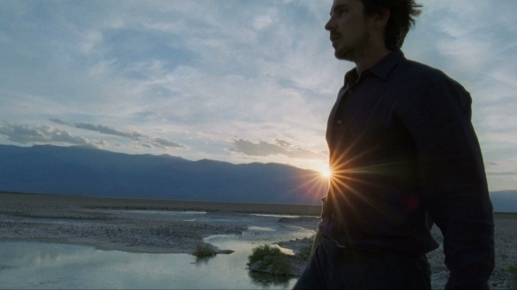
Here, Sisyphus meets John Bunyan’s Christian.
Or something like that.
Terrence Malick, for me, is a bit like T. S. Eliot, a forager through resonant, mythic fragments, pieced together into something that, while offering a reader a whole Thing and an often intensely emotional experience, also spins that reader off into multiple directions at once.
With something like “The Hollow Men,” for example, I first trace the Fisher King threads, and then I follow a Dante and Beatrice path, and then I’m sent to re-think Kurtz in Heart of Darkness, and then to grasp at remnants from Julius Caesar. All of these literary references are in “The Hollow Men,” and knowing them enriches my experience of the poem. But then, I also find that the poem works on a level that doesn’t seem to need any particular literary knowledge. Many of my students who’ve never read any of those other works love Eliot’s wasteland vision, those hollow whispering men; they can take the line “not with a bang but a whimper” and savor it. Just for itself. That line reaches directly into the feelings.
And so there’s meaning and there’s meaning and there’s meaning. Eliot is someone I will read my whole life and still find dark corners – that will very suddenly light up. Even Eliot himself, when a reader noted that he must have taken the “shadow” lines in “Hollow Men” from a poem by Ernest Dowson, agreed, “This derivation had not occurred in my mind, but I believe it to be correct, because the lines… have always run in my head.” It delights me to understand that even an artist cannot know everything contained in their own work. Eliot was an artist who was a receptacle who then poured himself into his work, at a conscious and unconscious level.
Malick is like that, I think, an artist, giving himself to his work utterly, and the result is a rich work that grows only richer. It is a richness that will make watching and re-watching and re-watching his films a life-long pleasure.
For now, after this first watch of Knight of Cups, I am thinking most of the classic tale of a journey Malick directly references, that journey of Christian in Pilgrim’s Progress. Christian is a seeker of the Celestial City, who bears a burden that cannot be lifted from him without help and who travels and travels, through the desert and the Slough of Despond and Vanity Fair, meeting guides and tempters along the way. In Knight of Cups are roads and roads; there are cars, trains, boats, planes, always moving, always busily journeying, towards destruction or towards anything at all, it’s difficult to tell, for in this pilgrim’s journey, for this man called Rick, there is no path. He wanders and wanders and reaches the same place. Like Bunyan’s Christian who is also a Sisyphus, he always returns to the place he began, picks up the same burden and continues up the same hill.
Is there a Celestial City for this pilgrim? Light and beauty and cleansing waters seem to promise it, but as for who has seen it? Who, indeed? Whose eyes have actually seen it? Who really knows it? Dante had a beautiful Beatrice with her pure eyes for a guide. Rick has many Beatrices, a cycle of beauties; this one, that one, will, surely, he believes, lead him forward. But “Here we go round the prickly pear / Prickly pear prickly pear / Here we go round the prickly pear / At five o’clock in the morning.” On it goes, round and round. A journeying stasis.
Malick, though, does not quite lead me to the same despair of Eliot’s “stuffed” and “hollow” men. I do not “whimper” in the end and want to die. In Rick’s world, “Between the conception / and the creation / Between the emotion / and the response” may “[fall] the shadow,” but there is so much light here, and with Rick, there is looking and the looking, out to the beautiful sea. The Celestial City. It may be there. That “may” is perhaps enough.

